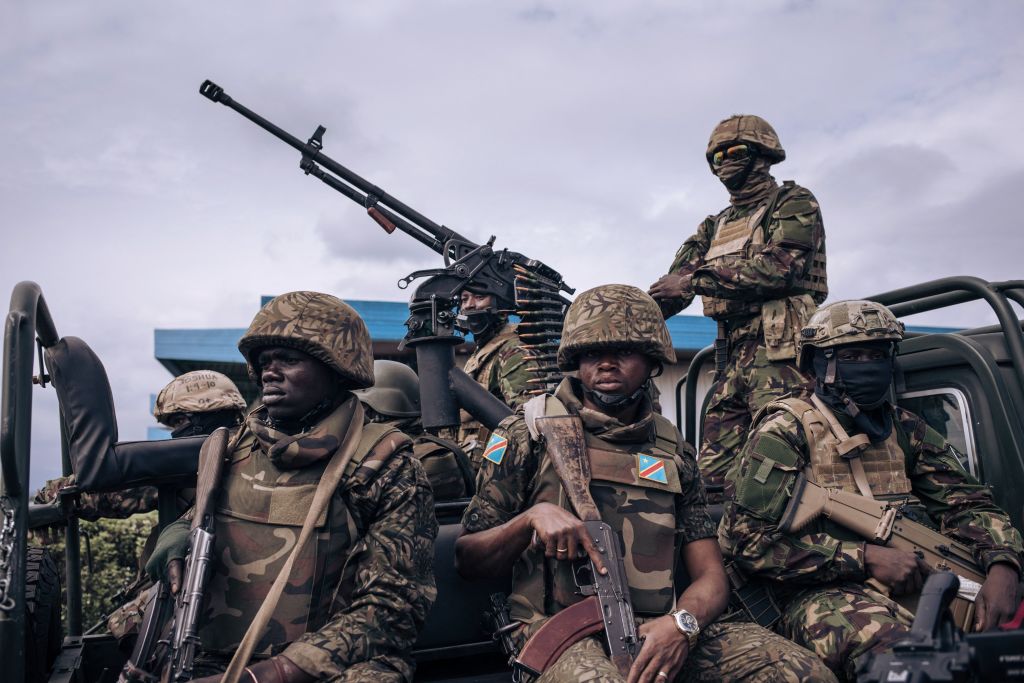ADF STAFF
As violence has escalated in the Democratic Republic of the Congo (DRC), an array of African forces entered the country with promises of restoring peace.
The latest addition, the Southern African Development Community (SADC), agreed on May 8 to deploy a regional force. Among the numerous unknowns is how the force would coexist with the fully deployed East African Community regional force (EACRF).
Experts such as Congolese political analyst José Nawej say too many military operations could cause command structure headaches.
“It’s going to be a Tower of Babel,” he told Kenya-based newspaper, The East African.
DRC President Felix Tshisekedi stated on May 8 that the SADC force will have “an offensive mandate.”
He has repeatedly criticized the EACRF over its mission and unwillingness to engage in combat with M23 rebels, who seized and occupied large swaths of land in 2022.
The EACRF says its mandate, which expired in March, is peacekeeping and protecting civilians, while also supporting political dialogue.
EAC Secretary-General Peter Mathuki, who only welcomed the DRC into the regional bloc in 2022, requested a six-month extension. Tshisekedi verbally agreed to three more months and said the DRC will evaluate the EACRF’s results at the end of June.
“If by that time we assess that the mandate was not fulfilled, we will send those contingents home with honor and thank them for having tried to bring their share of contribution to peace in DRC,” he said in a statement.
“This contingent which came to the rescue of the DRC will have to leave the territory for good.”
Tshisekedi is eager for a military offensive against M23, which is led mostly by ethnic Tutsis whom he accuses Rwanda of supporting. Despite confirmation by independent United Nations experts, Rwanda continues to deny involvement.
Here is a breakdown of some of the players in the eastern DRC:
Angola: President João Lourenço is an influential SADC leader and, as chairman of the International Conference of the Great Lakes Region, is tasked by the African Union to mediate between the DRC, Rwanda and the M23. He said on May 8 that he still believes “the M23 respects the cease-fire” and everything will be done “to avoid a confrontation in the region.” Lourenço has criticized delays in the process of reintegrating M23 rebels back into society. In a bilateral arrangement, Angola promised to deploy 500 troops to the eastern DRC but has sent only observers. Lourenço said that “conditions must be met before the deployment.”
Burundi: A bilateral arrangement signed in 2021 has allowed about 1,000 Burundian troops to conduct joint operations with Congolese forces (FARDC) against Burundian rebel groups, mostly the National Liberation Forces and the RED-Tabara militia, according to published reports.
EACRF: Deployment began with the arrival of Kenyan troops in November. The regional force only declared its deployment complete in April 2023, when troops from Burundi, South Sudan and Uganda joined the fray. The force commander, Kenyan Maj. Gen. Jeff Nyagah, resigned on April 28 amid tensions with DRC government officials. His replacement, Maj. Gen. Alphaxard Kiugu, reported for duty in Goma on May 19. Kenya has deployed about 900 Soldiers, while Uganda has about 1,000 in the EACRF. South Sudan has more than 400 troops, while Burundi has more than 500 Soldiers in the force.
FARDC: The multitude of armed groups committing violence in the eastern DRC has been a continuous challenge for the country’s armed forces, which the government has reshuffled regularly since the Congolese wars. Poor training and allegations of human rights abuses have eroded trust among civilians in some of the most vulnerable parts of the country. Corruption, low pay and a lack of structural control have led to FARDC needing to work with nonstate actors.
MONUSCO: The U.N. peacekeeping mission in the DRC is one of the world’s largest with 12,379 troops deployed as of February 2023. Its top priorities are to protect civilians and support the Congolese government in peace and stabilization efforts. Malawi, Morocco, South Africa and Tanzania are among the top troop contributors. Within MONUSCO, a smaller U.N. Force Intervention Brigade operates with an emphasis on peace enforcement and has clashed with M23 rebels and other militant groups.
SADC: In ordering its deployment, the SADC approved “a more coordinated approach, given the multiple deployments under multilateral and bilateral agreements in the eastern DRC” and said the DRC must put in place “the conditions and measures necessary for effective coordination between sub-regional forces and bilateral partners operating in DRC.” So far only Namibia has approved the deployment of its troops to the DRC. It is not known which of SADC’s 16 member nations will contribute troops, how many Soldiers will deploy or when they will arrive.
Uganda: Like Burundi, Uganda has engaged in joint operations within a bilateral deal. Launched in November 2021, Operation Shujaa aims to dismantle the Islamic State group-affiliated Allied Democratic Forces. The fourth phase of the operation in September 2022, however, “led to an increase in attacks against civilians in retaliation” and has fueled recruitment, according to a U.N. panel of experts.
Despite the multitude of actors, many hope that the DRC can have a successful African-led intervention that delivers peace to a troubled region.
At a May 5 regional summit in Bujumbura, Burundi, Kenya’s Prime Cabinet Secretary Musalia Mudavadi warned against “externalizing” the conflict beyond the region.
“We must be able to support our own processes, as it is only us who can deliver lasting peace for eastern DRC,” he said.

